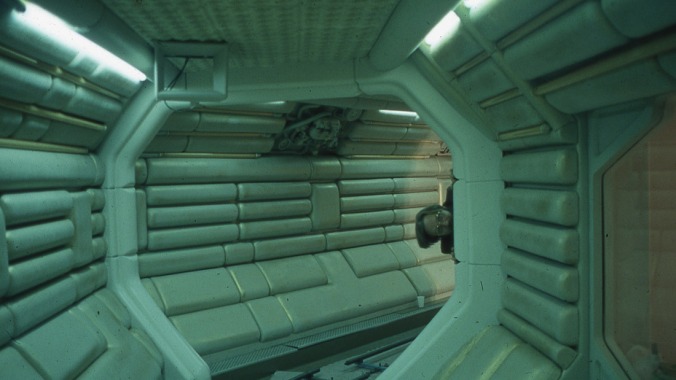Memory is a superficial look at the origins of Alien

In the 40 years since the crew of the Nostromo first awakened from hypersleep to investigate that fateful transmission on LV-426, Ridley Scott’s Alien has come to be regarded as such a classic that addressing its singular achievement seems almost beside the point. In fact, outside of 2001: A Space Odyssey and Star Wars, it is hard to think of another science fiction film that has been pored over in more detail in books, making-ofs, academic papers, and fan theories—and that’s without mentioning the influence its vision of the grotesque unknown has exerted (or, one should probably say, excreted) on pop culture.
To its credit, Alexandre O. Philippe’s slick new documentary, Memory: The Origins Of Alien, never loses sight of the core qualities that first made Alien a hit: that it’s terrifying and terrifically made, at once nightmarish and deceptively clinical. Despite an approach that often comes across as pretentious (most obviously for its repeated, credulity-straining attempts to examine the plot in terms of Greek mythology), Philippe finds a steady narrative groove in the opening stretch of the film, which amounts to an extended profile of Alien co-writer Dan O’Bannon. (Memory is the title of an unfinished O’Bannon script, the opening act of which would become the first 30 or so minutes of Alien.)
Here, the film manages to hit all the strong points: O’Bannon’s early friendship with the young John Carpenter (who would go on to tackle similar subject matter in The Thing); his stint on Alejandro Jodorowsky’s unrealized (and much-mythologized) Dune adaptation, which introduced O’Bannon to H.R. Giger, the Swiss artist who designed Alien’s otherworldly architecture and monstrous lifeforms; the influence of H.P. Lovecraft’s novella At The Mountains Of Madness, the EC Comics story “Seeds Of Jupiter,” and an assortment of ’50s and ’60s B-movies, including It! The Terror From Beyond Space, Queen Of Blood, and Planet Of The Vampires. Thankfully, Memory never lets this section devolve into a list of clips and titles. Instead, it provides handy summaries of the works in question, most of which comes courtesy of TCM’s Ben Mankiewicz, one of the more reliable talking heads in a large roster of interviewees that includes crew members, film academics, and even a couple of actors from the cast.
Ironically, it’s when Scott enters the picture that Memory begins to lose direction. Philippe, whose earlier documentary 78/52 focused on the shower scene in Psycho, attempts to pull off a similar conceptual gambit in the second half of the film, which examines an iconic moment in Alien, the chest-burster sequence, through a combination of nerdy behind-the-scenes trivia and highbrow theorizing. What does the character of Ash, the company android operating incognito abroad the Nostromo, tell us about the people who programmed him? What does the build-up to the sequence tell us about the class dynamics of the crew? What does it reveal about the sexual politics of Hollywood in the 1970s? And how do the paintings of Francis Bacon fit into all of this? There are some intriguing, sometimes even provocative theses scattered throughout—but theses are all they are, delivered in a lighting-round style that ensures that the ideas ever gain momentum. And oddly, by focusing at such length on the chest-burster sequence, Memory ends up giving Alien’s protagonist, Ripley, short shrift.
The behind-the-scenes material, in turn, has been covered more exhaustively elsewhere, most notably in Charles de Lauzirika’s nearly three-hour The Beast Within: The Making Of Alien, which was originally produced for the Alien Quadrilogy DVD box set back in 2003. (In fact, Memory frequently uses clips from that epic-sized special feature.) The result often feels superficial; it is neither a definitive account of the creation of Scott’s touchstone of horror and sci-fi, nor a cogent analysis of its aestheticized subtexts, those gritty and unnerving surfaces and the things lurking underneath.